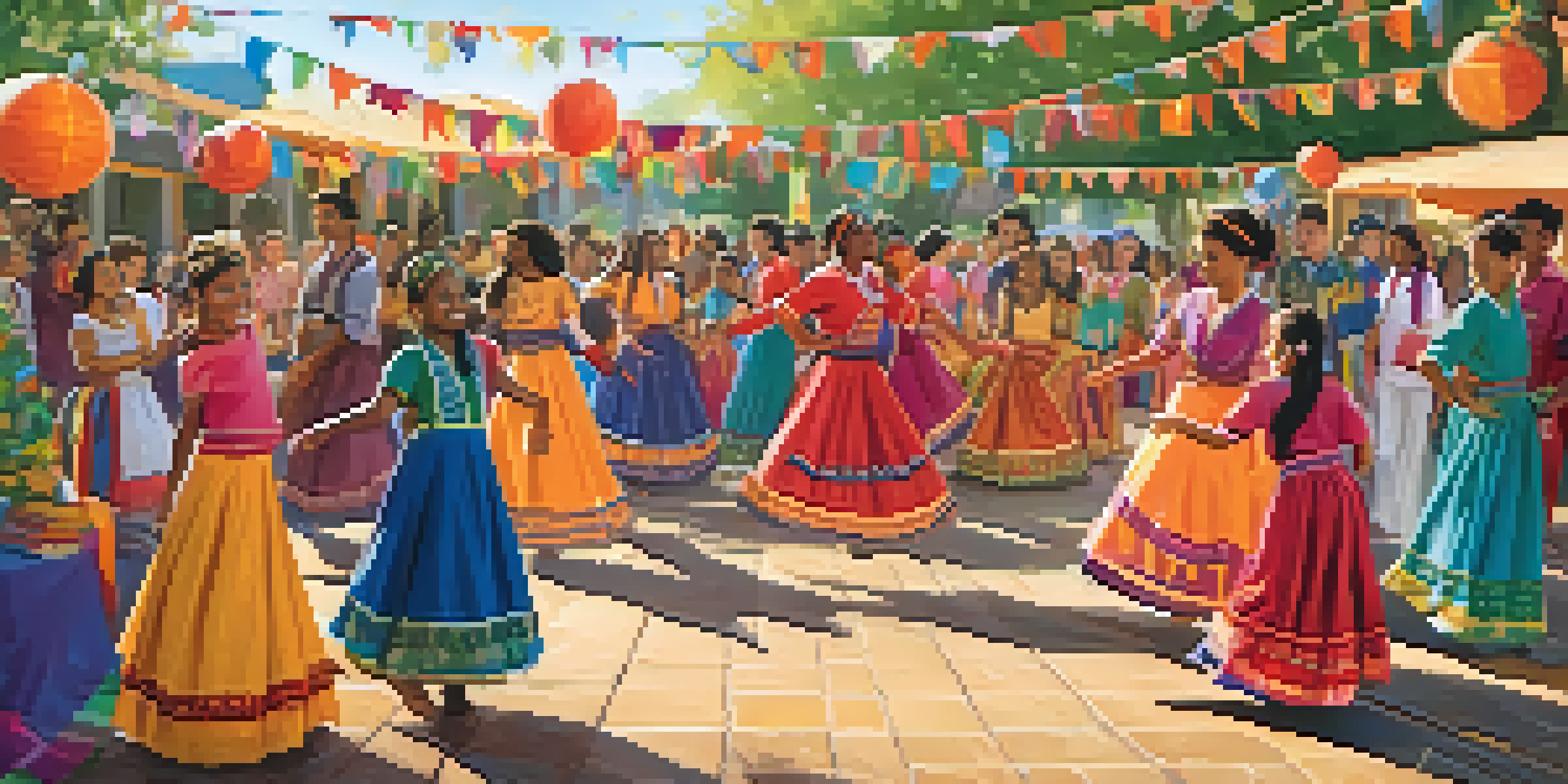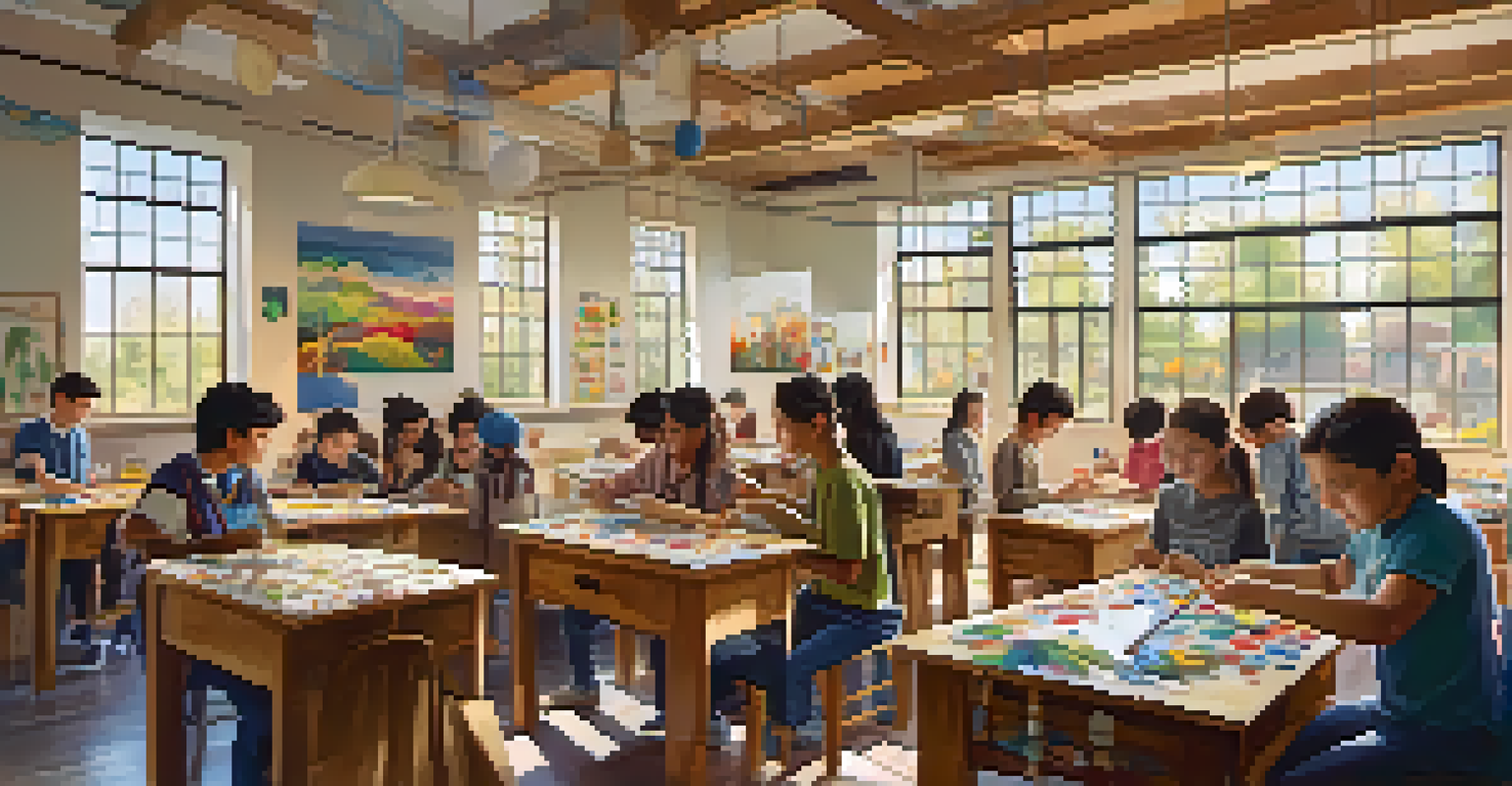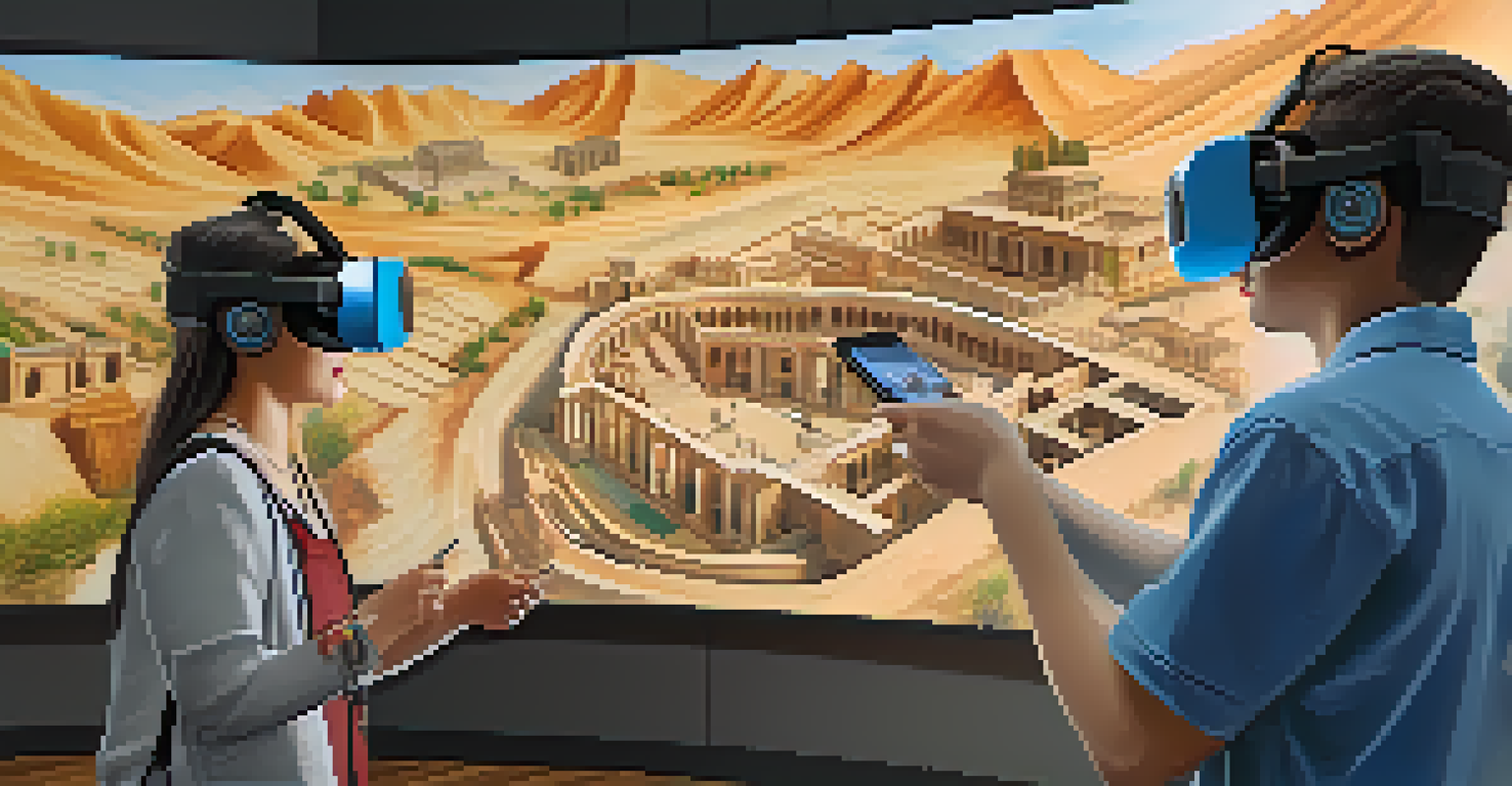The Role of Schools in Promoting Cultural Heritage Awareness

Why Cultural Heritage Matters in Today's World
Cultural heritage serves as a bridge connecting past generations to the present, enriching our understanding of identity. It encompasses traditions, languages, arts, and historical sites that define who we are as a community. By appreciating our cultural roots, we can foster mutual respect and understanding among diverse groups in society.
Cultural heritage is the foundation of our identity and a bridge to the future.
In a rapidly globalizing world, preserving cultural heritage becomes increasingly important. Schools play a crucial role in educating students about their own cultures and the cultures of others, creating a sense of pride and belonging. This awareness not only enhances individual self-esteem but also promotes empathy and cooperation among students from different backgrounds.
Furthermore, cultural heritage awareness helps students navigate the complexities of modern life, equipping them with the knowledge to engage thoughtfully with diverse perspectives. Schools can instill values of tolerance and appreciation for differences, allowing students to thrive in a multicultural environment.
Integrating Cultural Heritage into the Curriculum
One effective way schools promote cultural heritage awareness is by integrating it into the curriculum. Subjects like history, literature, and art can highlight the significance of various cultures, allowing students to explore their own backgrounds as well as those of their peers. This approach not only enriches academic learning but also fosters a sense of community within the classroom.

For example, a history lesson could involve studying local historical sites, encouraging students to visit and appreciate their significance. Similarly, literature classes can explore folktales and stories from different cultures, sparking discussions about values and traditions. By connecting lessons to students' lives, schools can make learning more relevant and engaging.
Cultural Heritage Enriches Identity
Cultural heritage acts as a vital link between past and present, enhancing our understanding of identity and fostering respect among diverse communities.
Additionally, incorporating cultural heritage into science and technology lessons can spark curiosity and innovation. Projects that explore traditional agricultural practices or indigenous technologies can reveal the rich history behind modern advancements, illustrating the importance of cultural knowledge in shaping our future.
Celebrating Cultural Diversity Through Events
Celebrating cultural diversity through school events is another powerful way to promote heritage awareness. Schools can organize multicultural days, festivals, or cultural fairs where students showcase their heritage through performances, food, and art. These events not only celebrate diversity but also encourage students to take pride in their backgrounds.
To know where you come from is to know where you are going.
Community involvement is key during these celebrations, as families can share their traditions and stories, further enriching the experience. Engaging the broader community fosters connections and creates a sense of belonging for students and their families. It also provides an opportunity for parents to become active participants in their children's education.
Moreover, such events can serve as a platform for students to develop their leadership and organizational skills. Planning and executing cultural events encourages teamwork and creativity, preparing students for future challenges while instilling a deep appreciation for cultural heritage.
Promoting Language Preservation in Schools
Language is a vital component of cultural heritage, and schools can play a crucial role in its preservation. By offering language classes or after-school programs in indigenous and minority languages, schools can help students connect with their roots. This not only enriches their educational experience but also reinforces their cultural identity.
Encouraging students to use their native languages in school fosters a sense of pride and belonging. Schools can create an inclusive environment where students feel comfortable expressing themselves in their mother tongues. This practice not only benefits the students but also enriches the school's cultural tapestry.
Integrating Culture in Education
Incorporating cultural heritage into school curricula promotes pride, empathy, and cooperation among students from various backgrounds.
Moreover, schools can collaborate with local communities to host language immersion programs or workshops, allowing students to engage with native speakers. These interactions provide a unique learning experience, enhancing students' linguistic skills while deepening their understanding of cultural nuances.
Utilizing Technology to Explore Cultural Heritage
In today's digital age, technology offers innovative ways for students to explore cultural heritage. Schools can incorporate virtual reality, online archives, and interactive platforms to provide students with access to cultural sites and artifacts from around the world. This technology makes learning more immersive and engaging, sparking curiosity about different cultures.
For instance, virtual field trips can transport students to historical landmarks or cultural festivals, allowing them to experience diverse traditions firsthand. Additionally, digital storytelling projects can empower students to share their own cultural narratives, fostering a sense of pride and agency.
Moreover, technology can facilitate connections with students from different regions or countries, enabling cultural exchange through collaborative projects. Such initiatives not only broaden students' horizons but also cultivate a global perspective, essential in today's interconnected world.
Empowering Students Through Arts and Crafts
Arts and crafts provide an engaging avenue for students to express their cultural heritage creatively. Schools can offer workshops that focus on traditional art forms, allowing students to learn and practice skills passed down through generations. This hands-on approach not only enhances creativity but also deepens their understanding of cultural significance.
For example, students may explore traditional dance, music, or visual arts, gaining insights into the stories and values behind these practices. Such activities can foster teamwork and collaboration, as students work together to create performances or exhibits that celebrate their diverse backgrounds.
Technology Enhances Cultural Learning
Utilizing technology in education allows students to explore cultural heritage in immersive ways, fostering curiosity and global perspectives.
Additionally, schools can partner with local artists or cultural organizations to facilitate workshops and mentorship programs. These collaborations enrich the learning experience, providing students with authentic connections to their cultural heritage while nurturing their artistic talents.
Fostering Global Citizenship Through Cultural Awareness
Promoting cultural heritage awareness in schools nurtures global citizenship among students. By understanding and appreciating diverse cultures, students become more empathetic and responsible citizens. This awareness equips them with the skills needed to navigate an increasingly interconnected world, fostering respect for human rights and social justice.
Schools can encourage students to take part in community service initiatives that celebrate cultural diversity, further reinforcing their commitment to global citizenship. Engaging in projects that support marginalized communities creates a sense of solidarity and responsibility, inspiring students to become advocates for cultural preservation.

Moreover, teaching students about global issues—such as climate change or migration—through the lens of cultural diversity can enhance their critical thinking skills. They learn to consider multiple perspectives, which is crucial in developing well-rounded solutions to complex challenges. Ultimately, schools play a vital role in shaping informed, compassionate citizens who value cultural heritage.
The Path Forward: Building Cultural Heritage Awareness
As we move forward, schools must prioritize cultural heritage awareness as a critical component of education. By implementing comprehensive programs that integrate cultural learning across the curriculum, schools can create an enriched learning environment. This commitment not only benefits students academically but also socially and emotionally, fostering a more inclusive atmosphere.
Collaboration between educators, families, and community organizations is essential in building effective cultural heritage programs. By pooling resources and knowledge, schools can create diverse learning experiences that resonate with students' lives. Open dialogues about cultural identity and heritage can further enhance understanding and appreciation.
Ultimately, the role of schools in promoting cultural heritage awareness extends beyond the classroom. By cultivating a love for cultural diversity, schools prepare students to thrive in a global society, ensuring that cultural heritage remains a vibrant part of our collective future.